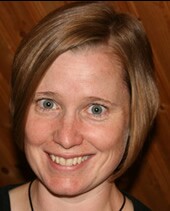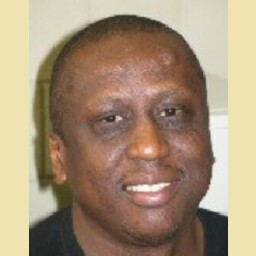Dr Williams obtained his Ph.D. degree in Experimental Condensed Matter Physics from Imperial College, University of London, United Kingdom in 1993. His doctoral research work was based on quantum transport studies of III-V arsenide and antimonide semiconductor systems, receiving full support as a Commonwealth scholar. He is a chartered Physicist and member of the Institute of Physics.
PROFESSIONAL EXPERIENCE
In 1993 Dr Williams joined the department of Physics at the University of Guyana, Guyana, South America as an Assistant Professor where he worked on the design and testing of Solar Flat-Plate Collectors. He served as Head of department from 1993-1996. In 1999 he was the recipient of a Commonwealth Post doctoral Fellowship to pursue work on quantum dot luminescent concentrators for solar cell applications, at Imperial College, University of London, United Kingdom. He joined the Solid State Engineering Group at the University of Nottingham, United Kingdom as a Research Fellow from 2001-2003 and worked on the electrical and RF characterization of III-nitrides for high-speed device applications, a in collaborative venture with the National Research Council, Canada. In 2005 he joined the department of Physics, University of Guelph as a Lecturer, and in 2009 as an Assistant Professor.
PROFESSIONAL ACTIVITIES & AWARDS
Dr. Williams was honoured with the 2012 Central Student Association's Teaching Excellence Award. In 2011 Dr. Williams was selected by the graduating class to give "The Last Lecture". He has been nominated for TV Ontario's Best Lecturer Award in 2009 and 2010 in recognition of his impact on students, and passion for teaching. He has served as an Assistant Chief Examiner, Physics, for the Caribbean Examination Council (CXC) Grade 12 Standardized Exams and as a panel member for the curriculum development and implementation of the Caribbean Advanced Proficiency Grade 12 Standardized Examination.
Dr. Williams is a former United Kingdom Commonwealth Scholar and Fellow.
RESEARCH ACTIVITIES
Dr. Williams' primary research interest is Physics Education and he is especially interested in exploring the following areas:
Among modern classroom technologies (interactive peer response systems -clickers, interactive computer simulations) and teaching paradigms (active learning classrooms), what works and what doesn't work? And how does one quantitatively measure this, given the challenge of setting up target and control groups?
How to create a learning environment in undergraduate physics courses which engages and improves student retention, especially among women, minorities and first generation university students.
How to design and deliver inquiry-based physics labs to improve undergraduate learning outcomes.
How to create effective training of Teaching Assistants to deliver enhanced learning and assessment outcomes.
Dr. Joanne O'Meara
I obtained my B.Sc. with Honours in Applied Physics in 1995 from McMaster University in Hamilton, ON, Canada. I completed my Ph.D. in Medical Physics in 1999, also at McMaster University. From 2000 to 2001, I was a post-doctoral associate in the Department of Nuclear Engineering at Massachusetts Institute of Technology in Cambridge, MA, USA.
PROFESSIONAL EXPERIENCE
During my postdoctoral fellowship, I worked as a Visiting Scientist at the Body Composition Laboratory at the USDA Human Nutrition Research Center on Aging at Tufts University. After completing my postdoctoral research at MIT, I became an Assistant Professor at McMaster University in the Medical Physics and Applied Radiation Sciences department, starting in September of 2001. In July 2002, I joined the Department of Physics at the University of Guelph as an Assistant Professor. I was granted tenure at the end of 2004, and was promoted to Associate Professor in 2006. In July 2009, I became Associate Chair of the Department. Since 2004, I have had adjunct faculty status in the Medical Physics and Applied Radiation Sciences department at McMaster University.
PROFESSIONAL ACTIVITIES & AWARDS
I am a reviewer for numerous international journals, as well as a reviewer for both NSERC and Canada Foundation for Innovation (CFI) grant applications. I have been involved in many community outreach activities, including Physics fun shows for elementary school participants in the S@GE program at the University of Guelph, as well as planning and taping 10 physics segments for Daily Planet, aired on the Discovery Channel. I have been extensively involved with the Division of Physics Education within the Canadian Association of Physicists (CAP), serving as Secretary/Treasurer, Vice-Chair, Chair and Past Chair over the years. I headed up the National Task Force on Undergraduate Physics Revitalization formed by the CAP, as well as participated in the selection of several Teaching Medal recipients for the CAP. I have co-organized many CAP Congress sessions for the Division of Physics Education, as well as assisted in the planning of many High School Physics Teachers' Workshops hosted at the CAP Congress. I was honoured with the 2011 CAP Medal for Excellence in Teaching Undergraduate Physics. In Mar/Apr 2005, I was the co-editor of a special issue of Physics in Canada on Physics Education. I am the recipient of the 2009 Special Merit Teaching Award from the University of Guelph Faculty Association. In 2004, I was awarded a Presidential Distinguished Professor Award by the University of Guelph.
RESEARCH ACTIVITIES
My research has primarily focused on the design of x-ray fluorescence (XRF) systems to measure elemental body composition in vivo. In general, such measurement systems are developed for assessing exposure of industrial populations in the workplace, as the existing monitoring techniques do not provide direct information regarding levels in biologically relevant tissues/organs, tending instead to rely on the inference of worker health from measuring levels in blood and urine.
Through the development of a Monte Carlo photon transport code for this work, I have investigated the optimal design of several in vivo XRF systems. Over the past several years, in collaboration with Physics department colleagues Iain Campbell and Ralf Gellert, I have modified this code to investigate the effect of water content in minerals on the Compton-to-coherent scattering ratio detected when probed with an x-ray source. The original Monte Carlo simulation has been expanded to include a host of additional elements, and variance reduction techniques have been introduced in order to increase the computing speed of the code. In 2006, we published an article in X-ray Spectrometry, describing our proposed method of comparing simulated and experimental Compton-to-coherent ratios in order to determine the presence of "invisible" OH and H2O. We found that the simulated ratios were consistent with the experimental values for an extensive set of geo-chemical reference standards. Furthermore, we demonstrated that this approach would be sufficiently sensitive to observe the effects from the presence of 6% water or more in individual samples. We are continuing the development of this Monte Carlo code: surface layers are being added in order to better model the new water-bearing compounds being measured experimentally. In addition, full modeling of interactions in the collimators and the detector are being added.
Our analysis approach has now been applied to determine the water content of soils and rocks encountered by the Spirit rover on Mars. Typical basaltic surface soils were found to be essentially dry (<1% water by weight) and basaltic rocks were similarly low in water content (<3.5 % water by weight). However, four bright subsurface soils in Gusev Crater were found to have water content in the range of 6 to 18% by weight. These soils also contain extremely high sulfur levels relative to other soils in the region. Together with constraints from mineralogy, our findings indicate that highly hydrated ferric sulfates are important carriers of bound water in these four locations. We reported this work in the Journal of Geophysical Research: Planets in 2008. Our research received substantial coverage in the national media in October, 2007, including appearances in the Globe and Mail, Toronto Star and on CTV news.
In addition, I continue to collaborate with colleagues at McMaster University in the field of elemental body composition. We have recently acquired a new system for measuring strontium in bone, which we will be exploring for use in monitoring patients being treated for osteoporosis with a compound that contains strontium.
|



